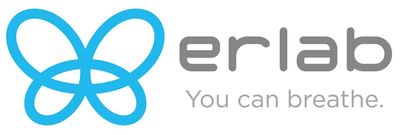What You Need to Know About Filtered Fume Hoods
Important considerations for selecting a fume hood, recent advances, and maintenance best practices
Associate editor Holden Galusha speaks with Jesse Coiro, general manager/directory of growth and strategic initiatives at Erlab, about when to buy a ducted versus ductless fume hood, carbon filter maintenance, and more.
Q: Based on your experience, under what circumstances would you recommend labs to use a ductless fume hood versus ducted?

A: There are few types of applications for which you don't want to consider ductless fume hoods: open acid digestion, perchloric acid handlings exceeding 5ml, any handlings of organophosphoric compounds, or the handling of hydrogen cyanide. After this, it is a matter of a feasibility study based on the handling to be performed within the fume hood to determine which type of hood fits your specific handling applications.
Q: Can you explain the importance of carbon filters for ductless fume hoods and what exactly they protect the user from?
A: Carbon filters are a critical component of a ductless fume hood as they are the adsorbers for any chemical molecule. Without carbon filters, it is impossible to capture any molecule. Of course, the science is more than just adding carbon to a filter, as you also need to have the proper distribution of air flowing through the carbon filter to ensure the proper residency time and complete utilization of the filter’s surface area internal zones. At times, HEPA filtration will also become necessary to integrate with the carbon filter based on the handling process, such as heating or if any powders will be introduced during the handling application.
Q: What advice can you give lab managers who are determining which fume hood will effectively meet their needs? Are there any common purchasing mistakes you've seen?
A: Only purchase a ductless fume hood from a company that will provide detailed results of the tested chemicals that their carbon filters can retain. In addition to a list of chemicals, ask the company to provide details of the retention capacity for each filter before a breakthrough of one percent of the TLV (threshold limit value) has been detected. Without this, any feasibility study of the filter's performance over time, or what is known as the filter life cycle, should be questioned.
Q: What features or innovations are you seeing emerge in the ductless fume hood market?
A: Sensing and communication technology have emerged over the last several years. Indicators that provide an on-board and web-based visual of the hood's performance, including the filter’s efficiency, have taken significant steps to reduce the anxiety of knowing if the filters are working. These communication methods are continuously evolving, and I fully expect the user experience to continue to improve.
Q: What are some best practices when it comes to the monitoring/maintenance/replacement of carbon filters?
A: First, always replace the filters as per the feasibility study, as this is a guarantee of the filter's efficiency and exposure risks are eliminated. Monitoring, in most cases, should be performed by the on-board sensing technology. There are also instances when sensors will not work to detect breakthroughs and that is where you would need to implement manual detection methods with Gastec tubes [gas detection tubes] after the primary filter exhaust. Other minimal maintenance would include sensor replacement every two to five years, depending on the sensors.
Jesse Coiro has over 20 years of experience providing solutions to the biopharma, pharmaceutical, medical device, and educational markets, with his specialty being focused on air filtration solutions for the protection of personnel, facilities, and the environment. Jesse also has experience working closely with hospitals, helping develop plans to adhere to USP <797> and <800> standards while also providing solutions, such as environmental monitoring, sterile processing, and proficiency testing.




